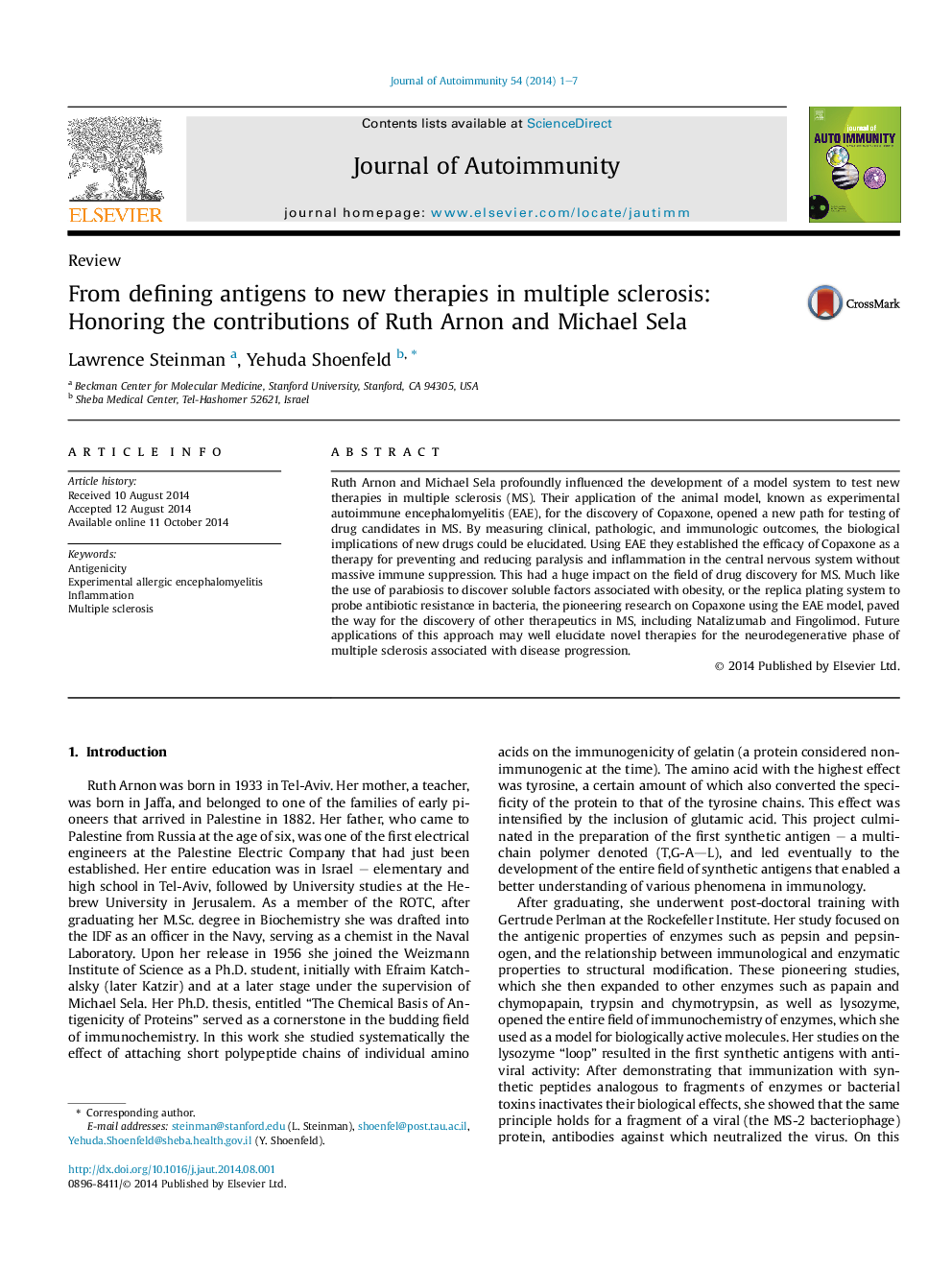| Article ID | Journal | Published Year | Pages | File Type |
|---|---|---|---|---|
| 3367778 | Journal of Autoimmunity | 2014 | 7 Pages |
•Ruth Arnon and Michael Sela profoundly influenced the development of a model system to test new therapies in multiple sclerosis.•By measuring clinical, pathologic, and immunologic outcomes, the biological implications of new drugs could be elucidated.•The pioneering research on Copaxone using the EAE model, paved the way for the discovery of other therapeutics in MS.
Ruth Arnon and Michael Sela profoundly influenced the development of a model system to test new therapies in multiple sclerosis (MS). Their application of the animal model, known as experimental autoimmune encephalomyelitis (EAE), for the discovery of Copaxone, opened a new path for testing of drug candidates in MS. By measuring clinical, pathologic, and immunologic outcomes, the biological implications of new drugs could be elucidated. Using EAE they established the efficacy of Copaxone as a therapy for preventing and reducing paralysis and inflammation in the central nervous system without massive immune suppression. This had a huge impact on the field of drug discovery for MS. Much like the use of parabiosis to discover soluble factors associated with obesity, or the replica plating system to probe antibiotic resistance in bacteria, the pioneering research on Copaxone using the EAE model, paved the way for the discovery of other therapeutics in MS, including Natalizumab and Fingolimod. Future applications of this approach may well elucidate novel therapies for the neurodegenerative phase of multiple sclerosis associated with disease progression.
